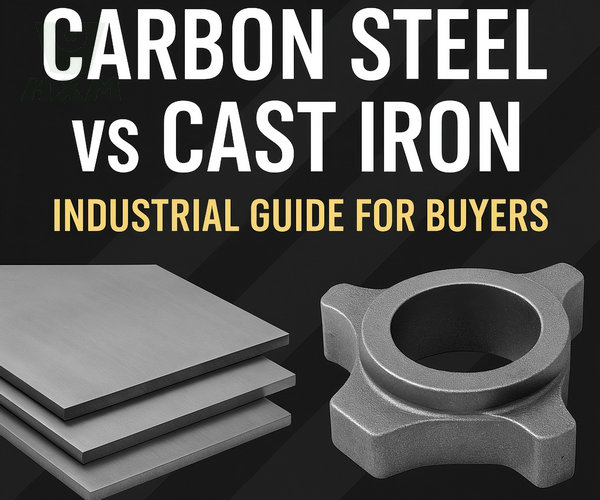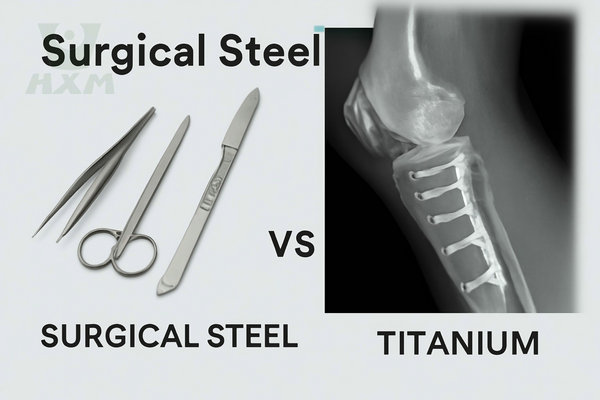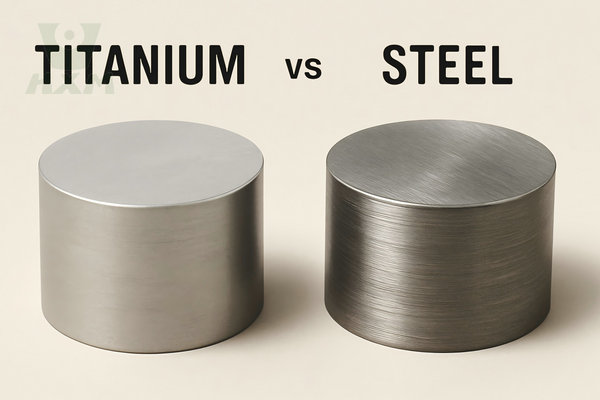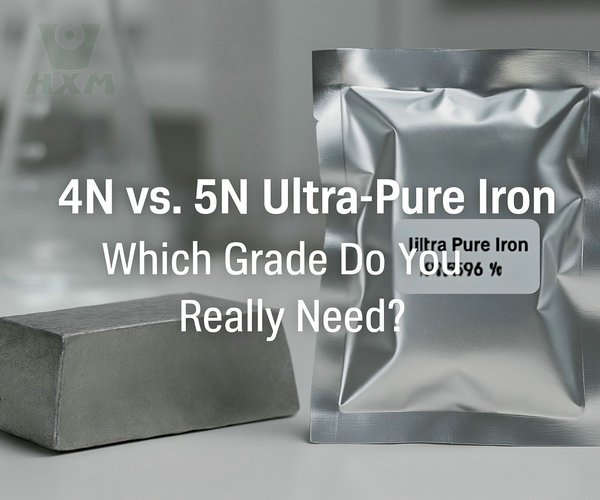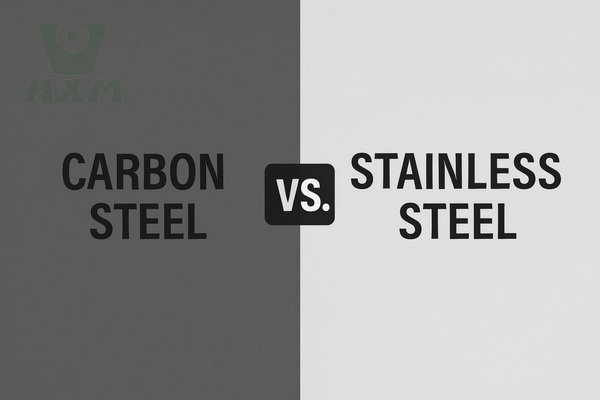
Carbon Steel vs Stainless Steel is two of the most commonly used metal materials in today’s world. Carbon Steel is an alloy steel containing carbon, which has high strength and hardness and is often used in the manufacture of tools, building structures, and mechanical parts. Stainless Steel is an alloy steel that contains no less than 10.5% chromium, a material that resists oxidation and corrosion and is therefore widely used in kitchens, medical equipment, and aerospace.
In this article, we will explore the differences and commonalities between Carbon Steel and Stainless Steel, analyze their characteristics, applications, advantages, and disadvantages, and how to maintain them. We will provide a detailed comparison and contrast to help readers better understand these two metal materials in order to make the best choice.
Definition and Characteristics of Carbon Steel vs Stainless Steel
Carbon Steel
Stainless Steel
Generally speaking, there are great differences between Carbon Steel and Stainless Steel in terms of composition, physical properties, chemical properties and application fields, so it is necessary to choose the appropriate material according to specific needs.
Carbon Steel vs Stainless Steel: Key Differences
To make the decision easier, here is a direct comparison of their key attributes in a simple table format.
| Feature | Carbon Steel | Stainless Steel |
| Corrosion Resistance | Low (Prone to rust without a protective coating) | High to Excellent (Chromium layer prevents rust) |
| Strength & Hardness | Very High (Harder and stronger) | High (More ductile and less brittle) |
| Cost | Lower (More budget-friendly upfront) | Higher (Initial cost is greater) |
| Appearance | Matte, rough finish; requires painting/coating | Lustrous, polished finish in various grades |
| Maintenance | Requires regular maintenance to prevent rust | Low (Cleans easily and resists staining) |
| Main Alloys | Iron, Carbon | Iron, Chromium, Nickel, Molybdenum |
Let’s break down the key performance indicators for each material.
1. Corrosion Resistance: The Defining Difference
This is the most significant distinction between the two metals.
Carbon Steel: As its name implies, carbon steel has a high carbon content and, more importantly, lacks the chromium necessary to fight corrosion. When exposed to air and moisture, the iron in carbon steel oxidizes and forms iron oxide, commonly known as rust. This process will continue until the metal is completely degraded. Therefore, for almost all applications, carbon steel must be protected with a coating, such as paint or galvanization, which requires maintenance and reapplication over time.
Stainless Steel: This is where stainless steel shines. It contains a minimum of 10.5% chromium, which reacts with oxygen in the air to form a thin, invisible, and passive layer of chromium oxide on the surface. This layer is non-porous and self-healing; if it gets scratched, the exposed chromium will simply form a new protective layer. This makes it exceptionally resistant to rust and staining, which is why it’s the mandatory choice for sterile environments like kitchens and medical facilities.
Expert Tip: For extreme environments, such as marine or chemical processing, higher-grade stainless steels like 316L, which contains molybdenum, offer even greater corrosion resistance.
2. Strength, Hardness, and Ductility
Both materials are incredibly strong, but their properties differ in important ways.
Carbon Steel: Due to its higher carbon content, carbon steel is generally harder and stronger than stainless steel. It exhibits excellent tensile strength, making it a primary choice for structural components like I-beams, machine parts, and tools that need to withstand high stress and wear without deforming. However, this hardness can also make it more brittle.
Stainless Steel: Stainless steel is typically more ductile and less brittle than carbon steel. This means it can be bent, formed, and stretched more easily without breaking, a property that is highly valuable in manufacturing complex shapes like sinks, automotive exhaust systems, and intricate architectural elements.
3. Cost: Upfront Investment vs. Lifetime Value
Budget is a critical factor in any project, and the cost difference is substantial.
Carbon Steel: The upfront cost of carbon steel is significantly lower than stainless steel. It is less expensive to produce, making it the most economical choice for large-scale structural projects or when the budget is the primary constraint.
Stainless Steel: The initial purchase price of stainless steel is higher due to the cost of alloying elements like chromium and nickel. However, it’s crucial to consider the total lifetime value. Since stainless steel does not require painting or coating and has a much longer lifespan in corrosive environments, it often proves to be the cheaper option over the long run by eliminating maintenance, repair, and replacement costs.
4. Aesthetics and Appearance
How the final product looks is often a key consideration.
Carbon Steel: In its raw state, carbon steel has a dull, matte gray, and somewhat rough finish. It is not aesthetically pleasing for consumer-facing or architectural applications without being hidden or covered by a finish like paint.
Stainless Steel: Stainless steel is known for its bright, clean, and modern appearance. It can be manufactured with a wide variety of finishes, from a brushed satin look to a highly polished mirror finish. This inherent beauty makes it a popular choice for appliances, architectural features, and decorative hardware.
5. Welding and Fabrication
Your ability to work with the material is another practical consideration.
Carbon Steel: Carbon steel is generally very easy to weld, making fabrication simpler and faster. It is more forgiving for welders of all skill levels.
Stainless Steel: Welding stainless steel requires more skill and care. The heat from welding can compromise the passive layer and reduce corrosion resistance at the weld seam if not done correctly. Specialized techniques and post-weld cleaning are often necessary to restore the protective layer, which can add to fabrication time and cost.
Applications of Carbon Steel and Stainless Steel
Carbon Steel
Stainless Steel
In general, Carbon Steel vs Stainless Steel has a wide range of applications in different fields. Choosing the right material depends on specific application needs and cost factors.
Advantages and Disadvantages of Carbon Steel vs Stainless Steel
Both Carbon Steel vs Stainless Steel have their own unique advantages and disadvantages that need to be considered when choosing the right material.
Advantages and Disadvantages of Carbon Steel
Advantage:
Disadvantage:
Advantages and Disadvantages of Stainless Steel
Advantage:
Disadvantage:
Generally speaking, Carbon Steel vs Stainless Steel has its own advantages and disadvantages, and choosing the appropriate material according to specific needs is necessary. For occasions requiring high strength and hardness, Carbon Steel is the first choice; for circumstances requiring excellent corrosion resistance and aesthetic appearance, Stainless Steel is the best choice.
Care and Maintenance of Carbon Steel and Stainless Steel
Both Carbon Steel and Stainless Steel require maintenance and maintenance during use to prolong their life and maintain their appearance.
Care and Maintenance of Carbon Steel
- Anti-rust: Carbon Steel is prone to rust, so it needs to be kept dry before use, and coated with anti-rust oil or lubricant to prevent oxidation and corrosion.
- Cleaning and Maintenance: Carbon Steel can be wiped clean with soapy water and a sponge. It should be wiped dry immediately after use to prevent water spots and fingerprints from smearing. In use, Carbon Steel should avoid prolonged exposure to water and humid environments to avoid rust.
- Heat treatment: The properties of Carbon Steel can be changed by heat treatment. For Carbon Steel that needs to be processed, it can be quenched and tempered to change its hardness and strength. During the heating process, attention should be paid to the control of temperature and time to ensure the best effect.
Maintenance and Maintenance of Stainless Steel
- Prevent scratches and corrosion: Although Stainless Steel has good corrosion resistance, care is still required to avoid surface scratches and corrosion. Avoid contact with hard objects such as other metals, sand, and chemicals during use to prevent scratches and corrosion.
- Cleaning and Maintenance: Stainless Steel can be wiped clean with soapy water and a soft cloth, or you can use a special stainless steel cleaner. During the cleaning process, care needs to be taken to avoid the use of cleaners containing chlorides and acids to avoid damage to the surface.
- Polishing: The surface of Stainless Steel can be polished to maintain its brightness and beauty. The polishing process requires the use of appropriate polishes and tools to avoid scratches and damage to the surface.
In general, the maintenance and maintenance of Carbon Steel and Stainless Steel need to be carried out according to specific conditions. For Carbon Steel, care is required to prevent rust and heat treatment; for Stainless Steel, care is required to prevent scratches and corrosion, as well as regular cleaning and polishing. With proper care and maintenance, it can prolong its life and maintain its appearance.
How to Choose: Key Questions to Ask
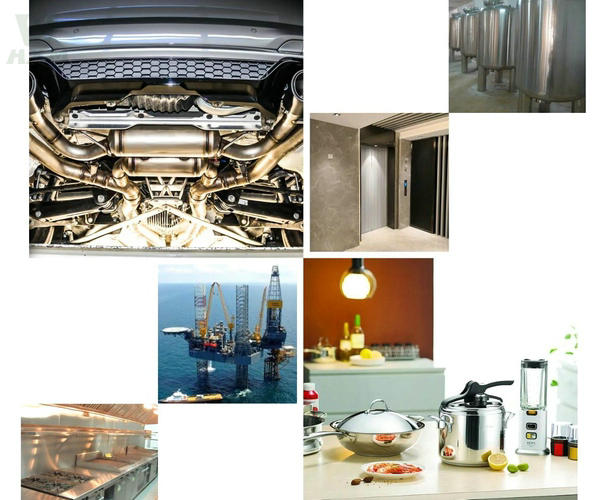
Still undecided? Ask yourself these questions about your project:
Will the metal be exposed to moisture? If yes, stainless steel is the far superior choice due to its inherent corrosion resistance. If the environment is dry or you can apply a protective coating, carbon steel is a viable option.
What is my budget? For projects with tight budget constraints where corrosion is not the primary concern, carbon steel offers significant cost savings.
Is appearance important? For architectural, decorative, or consumer-facing products, the clean and modern look of stainless steel is often preferred. Carbon steel is better for hidden structural components.
How much strength do I need? While both are strong, carbon steel is typically harder and stronger, making it ideal for high-stress industrial applications.
In Conclusion
To sum up, both Carbon Steel vs Stainless Steel have their unique characteristics and uses. Carbon Steel has high strength and hardness, and is widely used in construction, manufacturing, automobile, and other industries; while Stainless Steel has good corrosion resistance and aesthetics, and is widely used in the kitchen, pharmaceutical, chemical, and other fields.
However, the two materials also have some disadvantages, such as Carbon Steel being easy to rust, and the cost of Stainless Steel being relatively high. When choosing a material, you need to consider its characteristics and application, as well as how well it matches your specific needs.

